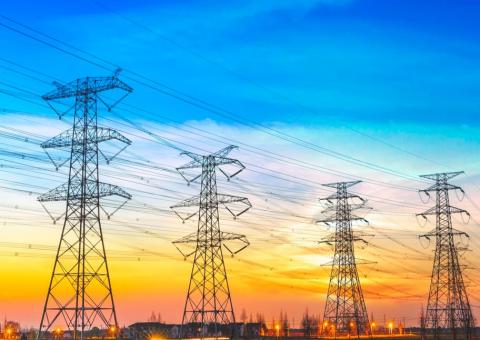To supply its customers with energy, Unitil buys it from suppliers around the country. Weather events, temperature fluctuations, plant operating costs, and other factors constantly affect energy demand – and the price for energy. Learn more about the effects these factors have on your bill.
Supply Factors
The cost of the energy itself, or supply charges, makes up about half of your bill, and vary from month to month. Price adjustments are used to help balance supply and demand. When there’s an energy surplus, supply rates go down. Conversely, when more energy is being used than is being produced, supply rates go up.
Because weather affects the amount of energy required to heat and cool our homes, fluctuations in temperature (as well as precipitation and wind) can contribute to supply and demand issues. While energy suppliers make every effort to anticipate the needs of consumers, extreme weather can cause spikes in demand – driving the price higher.
Transmission Costs
Before power is distributed to your local area, it must first travel over federally controlled transmission lines – “the grid.” Transmission is the bulk transfer of high-voltage energy over long distances, from the plant where the energy was generated to nearby distribution substations that feed power to the lines running down your street. The charge for the use of these lines makes up a separate, smaller portion of your bill. Transmission infrastructure upgrades are one factor that can affect this cost.
Distribution Costs
Distribution makes up another large part of your bill and covers the costs to maintain the lines, poles, and equipment that distribute energy over shorter distances – from area substations to your home or business. This includes the costs associated with restoring service, when needed. Even if you obtain your energy from a third-party supplier, this charge will always come from Unitil, and changes very little from month to month.
The distance that gas and electricity must travel from its source to consumers varies by market and could also affect your utility rates. Power outages, and the restoration efforts that follow, are most often caused by extreme weather.
Energy Savings Programs
Finally, a small portion of your bill is used to secure funding for energy savings programs in the states in which we operate, such as Mass Save, NHSaves, and Efficiency Maine. These programs help the environment in the long run, and keep your energy bills affordable through rebates and other incentives.
Fun Fact: About 40% of energy from all resources is used for electricity – more than any other purpose.
Key Takeaways:
- Supply and demand are the factors that contribute most to energy rate changes.
- Weather has the biggest influence on supply and demand, as heating and cooling represent the largest chunk of residential utility bills.
- Electricity costs are generally highest in the summer, when demand is high and more expensive generation sources are added to meet this demand. The same goes for natural gas in the winter, when home heating demand is at its peak in New England.




